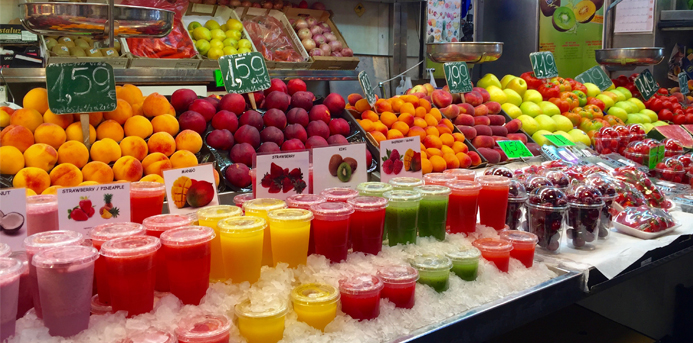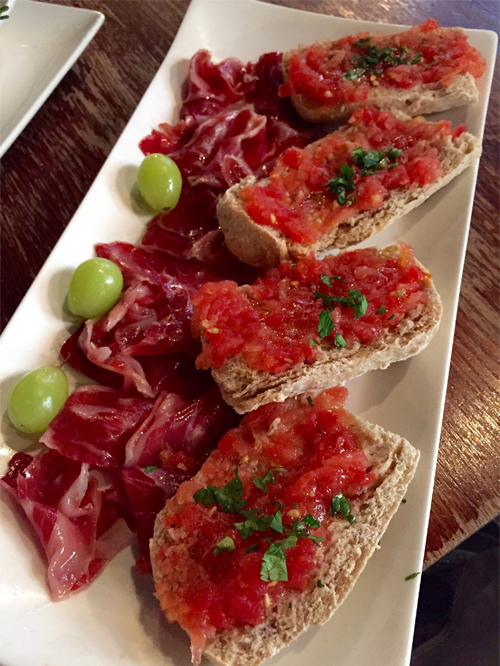Spain, a breathtaking country with a fascinating history and rich food culture, is a wonderful European destination to visit with kids. An integral part of Spanish life, children are adored and welcomed just about everywhere — including restaurants. Experiencing Spanish meals like a local, however, will likely require some adjustments for American families, especially those with young children, so here are some tips to help you get the most out of meals during your visit.
Spanish Eating Habits
For Spaniards, eating means savoring one of life’s greatest pleasures and meals are almost always enjoyed at a leisurely pace and shared with friends or extended family. Spanish meal schedules differ dramatically from what we are used to in the U.S. The day starts with desayuno, a light breakfast, typically consisting of rolls or sweat bread, butter and jam. Almuerzo, or lunch, is the biggest meal of the day and eaten between 1:30 p.m. and 3 p.m. La cena, dinner, is late by American standards, often at 9:30 p.m. or as late as 10:30 p.m. Most restaurants don’t even open for dinner until 8:30 p.m., which can be a challenge for kids used to a much earlier dinnertime (and bedtime!).
Tapas
Luckily, tapas, small dishes or appetizers often enjoyed by locals in the early evening with drinks, are almost universally available at most times of day throughout Spain. Tapas can be a great way to tide your family over until dinner — if you can last that long. If not, order enough and tapas can serve as a more-than-adequate substitute for a traditional dinner. Served hot or cold, and typically shared amongst the entire party, they provide a great opportunity for sampling a wide variety of traditional Spanish dishes. This is a particularly helpful approach for families, as it is easy to order a few dishes which are sure to be a hit with everybody and a few others for the more adventurous eaters.
Ordering Tips
Great authentic food can be found everywhere in Spain (see below for a few recommendations in Madrid and Barcelona), but sometimes, especially for the first-time visitor, ordering can feel overwhelming. Here are a few tips that can make eating out in Spain less intimidating:
- Ask about and be sure to try the local specialties, which vary from region to region.
- Let your eyes lead the way. Many places that serve tapas have a counter where all the food is displayed, making it easy to point out things that you would like to try. If you’re seated at a table, take a quick look around at what other people, particularly the locals, are eating. If something looks appealing, ask your server about it.
- Ask about the Menú del Día, the daily special, offered by most restaurants and which usually includes water, bread, a drink and a selection of appetizers, main courses and desserts to chose from. It comes at a fixed, and usually very reasonable, price.
Kid-Friendly Spanish Dishes
Traveling around Spain, you won’t find many children’s menus, but many dishes are hits with kids and Spanish food is rarely overly spicy. Some favorites include:
- patatas bravas (fried potatoes with slightly spicy sauce)
- calamares (fried calamari; in Madrid, often eaten on a sandwich)
- jamón (oh-so delicious Spanish cured ham)
- pan con tomate (toasted bread, rubbed with garlic, topped with grated tomato and seasoned with olive oil and salt; a signature offering in Catalan cuisine)
- paella (often considered Spain’s national dish; consists of rice flavored with saffron and various combinations of vegetables, seafood and meats like chicken and chorizo)
- churros (sticks of fried dough served with deliciously thick, hot melted chocolate)
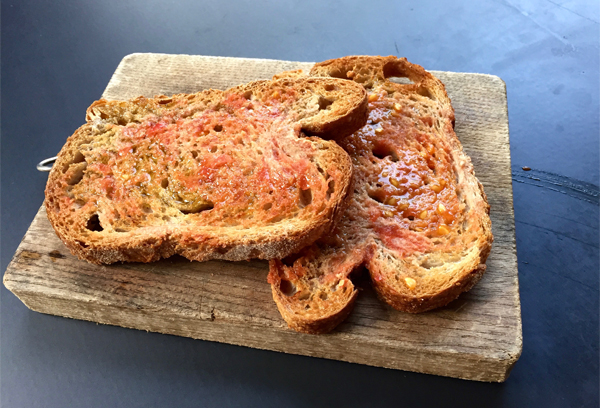
A Few Dining Suggestions:
Madrid:
- Mercado de San Miguel: Madrid’s famous bustling food market where you can sample everything from cured meats, seafood, cheese and olives to baked goods, desserts and more. Graze as you stroll or stop at one of the counters or standing tables scattered throughout the premises.
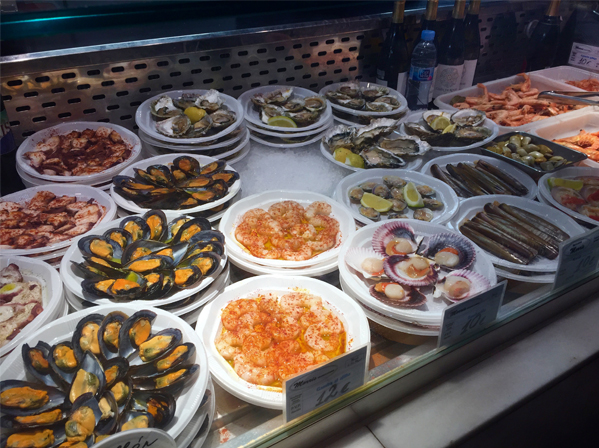
- El Sobrino de Botin: The world’s oldest restaurant according to the Guinness Book of Records, known for its delectable roasted suckling pig. Hemingway, once a regular, mentions it in his book “The Sun Also Rises.”
- Lamucca de Prado: A trendy tapas bar in the Prado area with great food and fantastic sangria. Try pimintos asados con queso de cabra, roasted peppers with goat cheese and almonds.
- Chocolatería San Ginés: Legendary Madrid institution serving churros and porras (thicker version of churros) begging to be dipped in oh-so-delicious melted chocolate. A must-do when in Madrid.
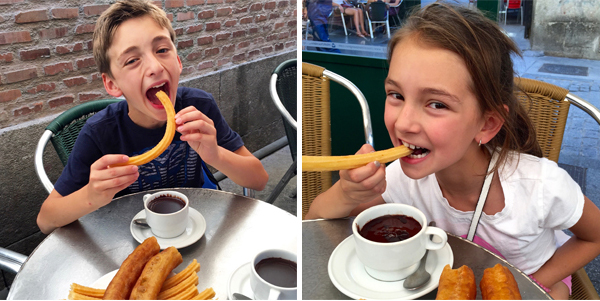
Barcelona:
- La Boqueria: Barcelona’s colorful food market in the midst of the famous Las Ramblas; includes several tapas bars. Pinoxto and El Quim are two of the most famous, but the others are good too.
- La Mar Salada: Down-to-earth culinary extravaganza close to Barceloneta Beach, focused on fresh seafood. Be sure to try their black paella. Even kids will love it.
- El Gallito: A lovely tapas restaurant right on the beach, below Barcelona’s famous W hotel. Excellent food and tinto de verano (lighter version of sangria). A great place to enjoy the sunset and people-watch. Reservations recommended.
- Farggi: A perfect spot for taking a break with tasty gelato and coffee prepared to perfection. Also serving pastries and sandwiches. Several locations in Barcelona.
More from Make It Better:
